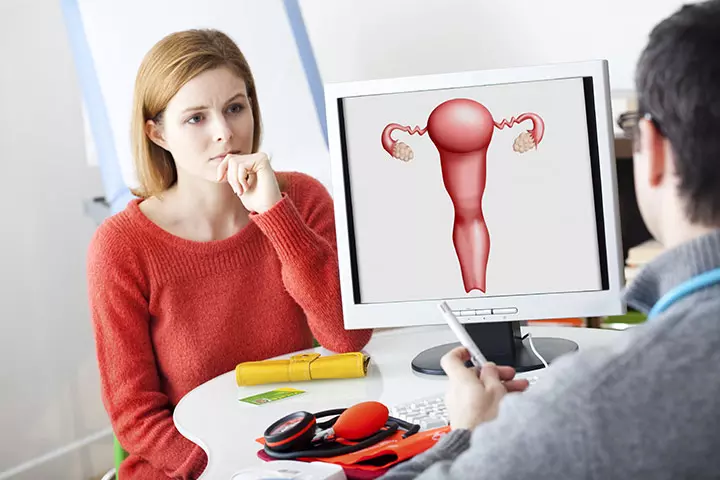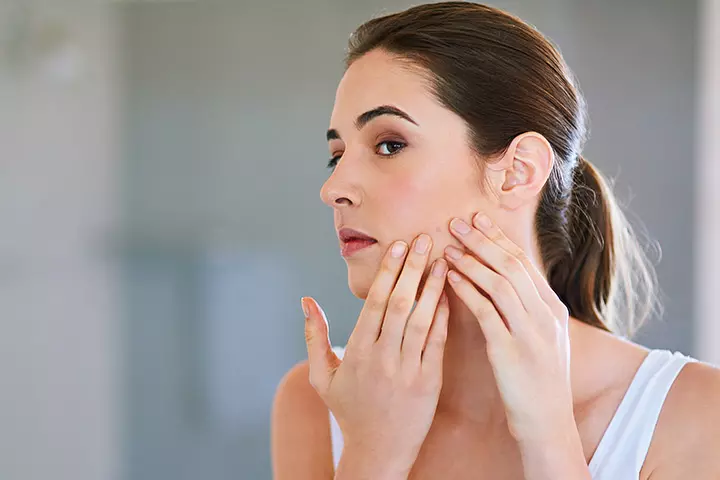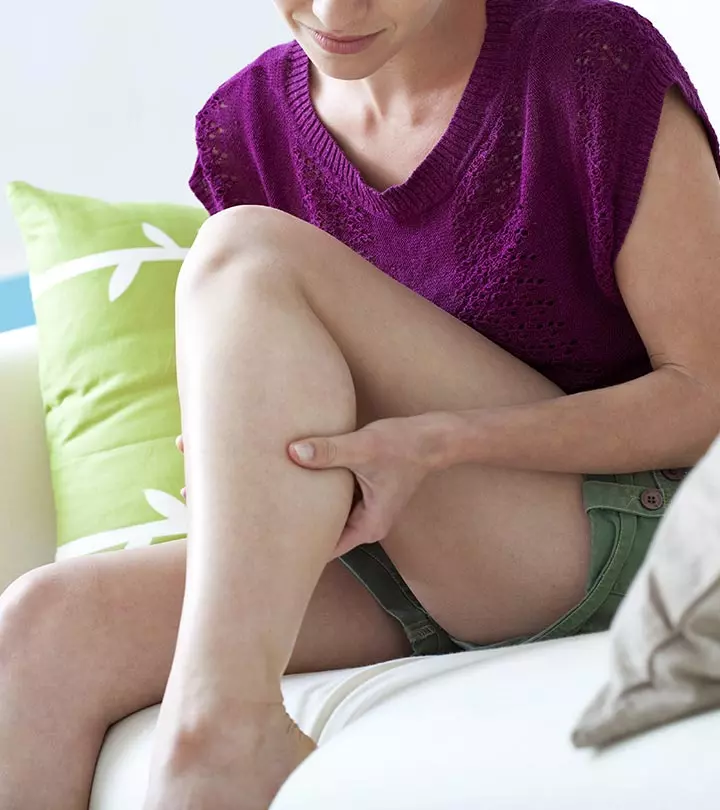
Image: Shutterstock
Childbirth is an incredible and life-changing experience, but it can also be challenging for a woman’s body. In the postpartumiThe period after childbirth when a woman's body adjusts to the hormonal and physical changes of pregnancy and delivery period, a mother’s body, including the vaginal area, needs to heal and recover. Postpartum Healing Pads (Padsicles) are one of the ways to alleviate the discomfort and promote healing (1). Padsicles are chilled sanitary napkins or pads that provide a soothing and cooling sensation to the vaginal area. They are easy to make at home and are a great addition to your postpartum recovery kit. In this post, we tell you how to make a padsicle, use it, and store it.

Key Pointers
- Padsicles, also known as postpartum healing pads, are chilled sanitary napkins or pads that provide a soothing and cooling sensation to the vaginal area after natural childbirth.
- They are easy to make at home and can be customized with witch hazel, aloe vera, and lavender oil for their anti-inflammatory and soothing properties.
- Padsicles can promote healing in the vaginal area and reduce the chances of infection and hemorrhoidsiA common condition that causes swollen veins in the rectum and anus due to straining during bowel movements, pregnancy, and obesity .
- They are a convenient alternative to traditional ice packs and can be worn discreetly under clothing.
- Padsicles should be used with other postpartum recovery techniques, such as pelvic floor exercises and staying hydrated, for best results.
What Is A Padsicle (Postpartum Healing Pads)?
Postpartum padsicles are a simple yet effective tool for new mothers looking to alleviate discomfort and promote healing in the vaginal area following childbirth.
They are easy to make, easy to use, and can be customized to suit individual needs.
A padsicle is a sanitary napkin or pad that has been soaked in a soothing mixture and then frozen. It heals and alleviates discomfort in the vaginal area after delivery. The purpose of padsicles is to provide a cooling and numbing sensation to the area, helping with afterbirth pains, swelling, and bruising (2).
Padsicles are easy to make at home and can be customized to suit your needs. The mixture used to soak the pads can include witch hazel, aloe vera, and essential oils. These ingredients are known for their anti-inflammatory and soothing properties.
Padsicles should also be used with other postpartum recovery techniques, such as pelvic floor exercises and staying hydrated, to promote healing and recovery (3).

Why You Must Try A Padsicle After Childbirth?
You can try padsicles to reduce discomfort in the perineum and promote healing postpartum (1). They are easy to make at home, convenient to use, and provide multiple benefits during the postnatal phase for the new mom. They can be used right after childbirth to several weeks for postpartum care after doctor consultation.
Padsicles are also beneficial in reducing the chances of infection by promoting the healing of any tears or episiotomyiA surgical incision made to the perineum during childbirth. It is done to widen the vaginal opening to ease delivery that may have occurred during childbirth. It may also help reduce the chances of hemorrhoids and soothe any pre-existing soreness (4). Regular use may reduce the chances of getting stitches and tearing during the postpartum period. They are also a great alternative to traditional ice packs as they are more convenient and can be worn discreetly under clothing.

 Did you know?
Did you know?What Supplies Are Needed To Make And Store A Padsicle?
You will need the following supplies to make a padsicle (2).
- Sanitary napkins or pads: You can use regular or overnight pads as long as they are not scented or have added lotions.
- Aloe vera gel: Aloe vera gel is known to have soothing and cooling properties, making it ideal for postpartum use.
- Witch hazel: Witch hazel is known to have anti-inflammatory properties, making it ideal for reducing swelling and discomfort.
- Essential oils: Essential oils such as lavender, chamomile, and tea tree oil have soothing and healing properties. Be sure to use therapeutic-grade oils, and avoid using oils that may irritate sensitive skin.
- Plastic wrap or food storage bags: These will be used to wrap the padsicles before storing them in the freezer.
- Freezer: Padsicles must be stored in the freezer for at least two hours before use.
 Quick fact
Quick fact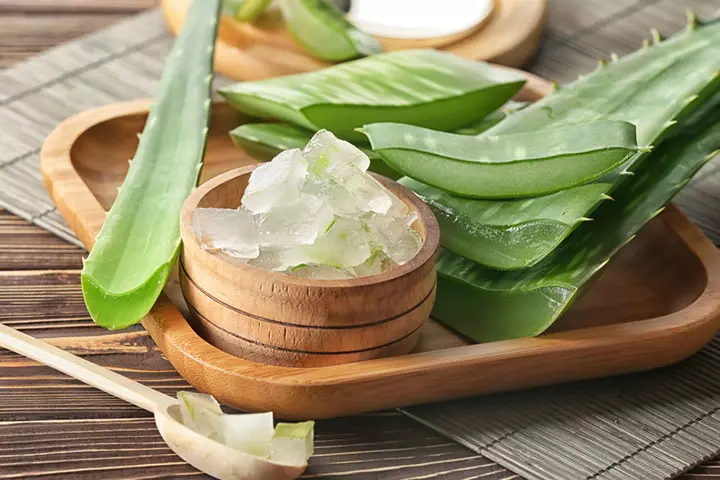
How To Make A Padsicle?
Making a padsicle is a simple process that can be done at home. Here is a step-by-step guide on how to make a padsicle (2).
- Place a sanitary napkin or pad on a clean and disinfected surface.
- Using a clean dropper, apply aloe vera gel to the napkin or pad, making sure to cover the entire surface.
- Apply witch hazel to the napkin or pad using a clean dropper.
- Add a few drops of your desired essential oil to the pad.
- Carefully fold the pad in half, ensuring that the gel, witch hazel, and essential oils are evenly distributed.
- Carefully wrap the pad in a plastic wrap or food storage bag.
- Place the wrapped napkin pad in a container or plastic bag and store it in the freezer for at least two hours.
- Once the padsicle is frozen, it is ready to use. Take it out of the freezer and unwrap it. If it is too cold, you may wait for some time before use.
Ukemochi, a mother of one, shares her tips on how padsicles brought her relief after childbirth. She says, “I used a recipe that I found on Pinterest: Padsicle recipe. I find that witch hazel and aloe vera helped me more than just using the plain frozen water on a pad that the hospital offered. I used both types of pads – the special padsicles once a day, usually before bed, and normal padsicles throughout the whole day (i).”

 Did you know?
Did you know?How To Use Padsicles?
Padsicles are an excellent homemade remedy for postpartum soreness and menstrual cramps, but they should be used carefully, following the proper instructions.
When using a padsicle, ensure it is not too cold before placing it in your underwear. You can test the temperature by holding it against your inner wrist. Once you have determined that it’s at a comfortable temperature, you can use it. The coldness will help reduce inflammation, and the aloe vera and witch hazel will soothe the soreness.
It is important to note that padsicles should only be used externally and not be inserted into the vagina. Also, check the expiration date of the ingredients you used to make the padsicle before using it.

How To Store A Padsicle?
To properly store a padsicle, you should wrap it in plastic to protect it from any external contaminants or odors.
This will also prevent it from drying out in the freezer. After covering the padsicle in plastic wrap, place it in an airtight container or a freezer bag. This will keep it fresh and prevent it from absorbing other odors from the freezer. Once correctly stored, the padsicle should be used within a month (7).
 Point to consider
Point to considerFrequently Asked Questions
1. Do padsicles still absorb blood?
Yes, padsicles are still able to absorb menstrual blood. When prepared correctly and with the right proportions of ingredients, padsicles retain the same absorbent properties as regular sanitary pads while also providing added benefits for postpartum recovery such as reducing swelling and healing bruising.
2. Do I need padsicles if I have a C-section?
Padsicles are typically used to alleviate discomfort and promote healing in the vaginal area after natural childbirth. If you have had a C-section, the vaginal area may not be affected, so padsicles may not be necessary (3).
3. How long do I use padsicles?
Padsicles are typically used postpartum, lasting anywhere from six to twelve weeks after childbirth. They are best used during the first few days postpartum when the discomfort is more intense (1).
4. How many padsicles should I make?
The number of padsicles you should make will vary depending on your personal needs and recovery process. Make enough to last through the initial, more intense period of postpartum discomfort.
5. When should I make homemade padsicles?
It’s best to make homemade padsicles before birth. so they’re ready to use as soon as you need them. You can make the padsicles in advance at around 34 weeks (7).
6. Can I buy pre-made/ store-bought padsicles?
It is possible to purchase pre-made or store-bought padsicles, although they may not be as widely available as traditional sanitary products. Some companies and small businesses produce and sell pre-made padsicles, which can be found online or in select stores.
Postpartum padsicles are an easy, convenient and effective way for new mothers to alleviate discomfort and promote healing during the postpartum period. Made with natural ingredients such as witch hazel, aloe vera gel, and essential oils, they provide a soothing and cooling sensation to the vaginal area, reducing inflammation and discomfort. Padsicles are easy to make at home and can be a great addition to your maternity or motherhood-essentials kit.
Infographic: What Are The Different Types Of Padsicles?
There are several types of padsicles, each with its unique ingredients and benefits. These ingredients have different properties, helping in different ways, including reducing inflammation, promoting healing, and reducing the chances of infection. The following infographic presents the common types of padsicles containing different ingredients.
Some thing wrong with infographic shortcode. please verify shortcode syntax
Illustration: Postpartum Padsicles: What Are They How To Make And Use Them
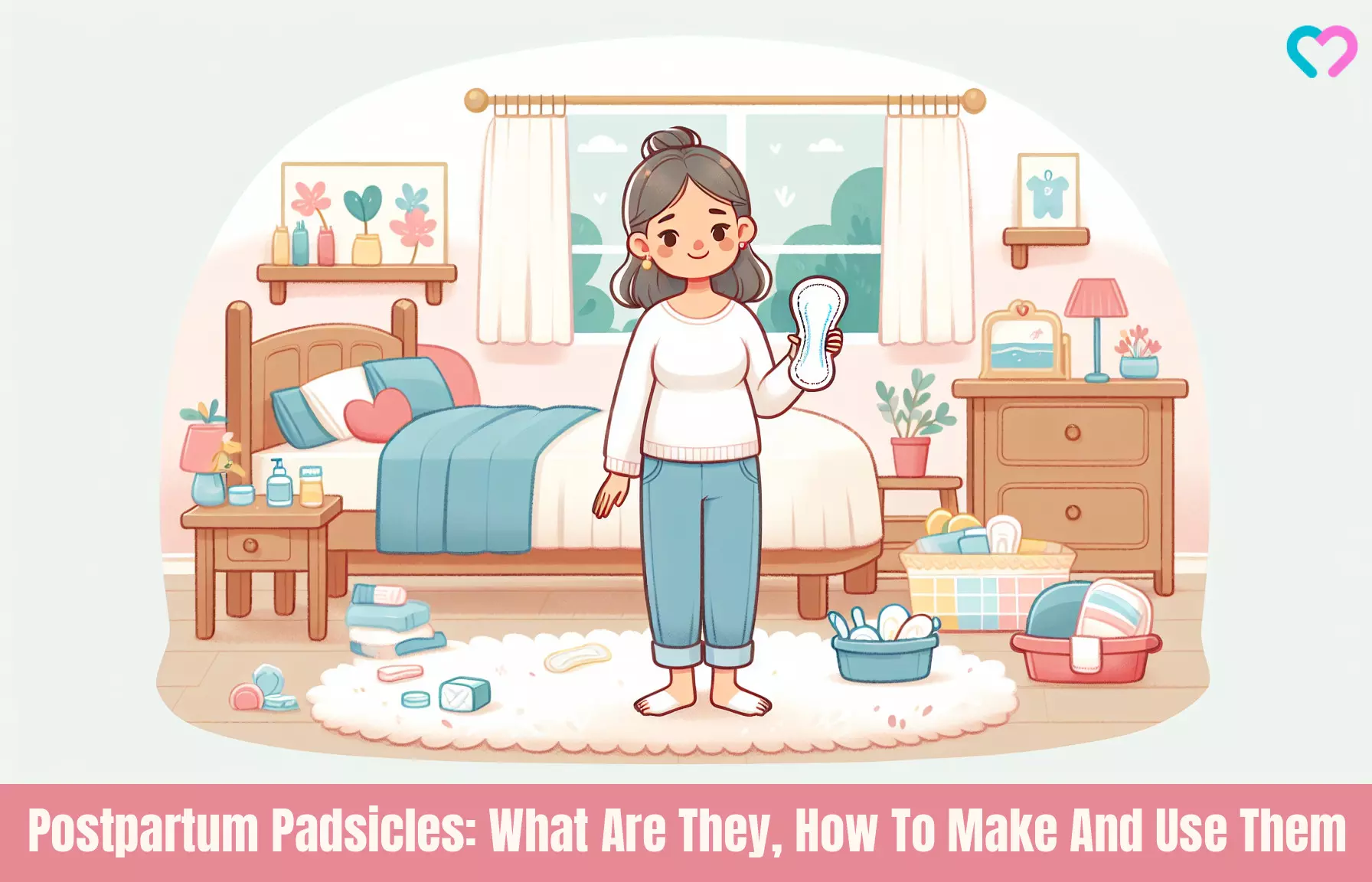
Image: Dall·E/MomJunction Design Team
Learn how to take care of yourself after giving birth! From DIY Padsicles to C-Section Care, this video will help you eliminate postpartum stress and feel your best.
Personal Experience: Source
MomJunction articles include first-hand experiences to provide you with better insights through real-life narratives. Here are the sources of personal accounts referenced in this article.
i. Hospital bag essentials.https://theartofmomliness.wordpress.com/
References
- Postpartum Recovery.
https://americanpregnancy.org/healthy-pregnancy/first-year-of-life/postpartum-recovery/ - Tricks and Treats… to Thrive Postpartum.
https://daraluzbirthcenter.org/staff-blogs/tricks-and-treats-to-thrive-postpartum-five-favorites-from-a-midwife/ - Postpartum Recovery.
https://www.multicare.org/vitals/postpartum-recovery/ - Pelvic Care After Childbirth What New Moms Can Expect.
https://www.medstarhealth.org/blog/pelvic-care-after-childbirth - Aloe Vera.
https://www.nccih.nih.gov/health/aloe-vera - Witch Hazel.
https://www.herbalgram.org/resources/herbalgram/issues/116/table-of-contents/hg116-herbprofile - Postpartum PADsicles.
https://www.premierob-gyn.com/blog/postpartum-padsicles
Community Experiences
Join the conversation and become a part of our nurturing community! Share your stories, experiences, and insights to connect with fellow parents.
Read full bio of Kay Lakka
Read full bio of Ghazia Shah
Read full bio of Rebecca Malachi
Read full bio of Reshmi Das






